Create a Short Cover Letter for Your Job Application
Cover letters are an important element of job applications, but is a short cover letter the right option for you? Find out more with our short cover letter example and tips.
Cover letters are an important element of job applications, but is a short cover letter the right option for you? Find out more with our short cover letter example and tips.
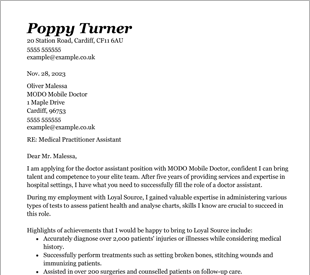
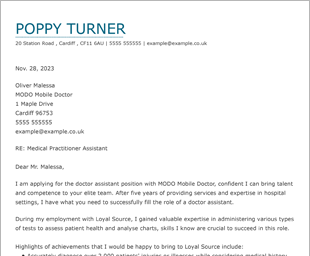
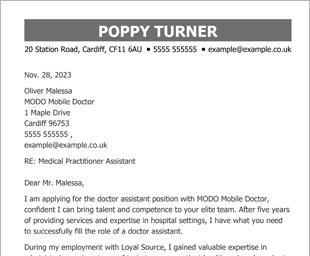
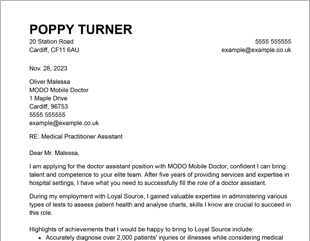
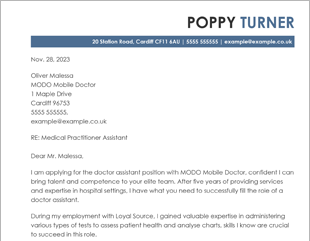
OUR USERS HAVE BEEN HIRED BY
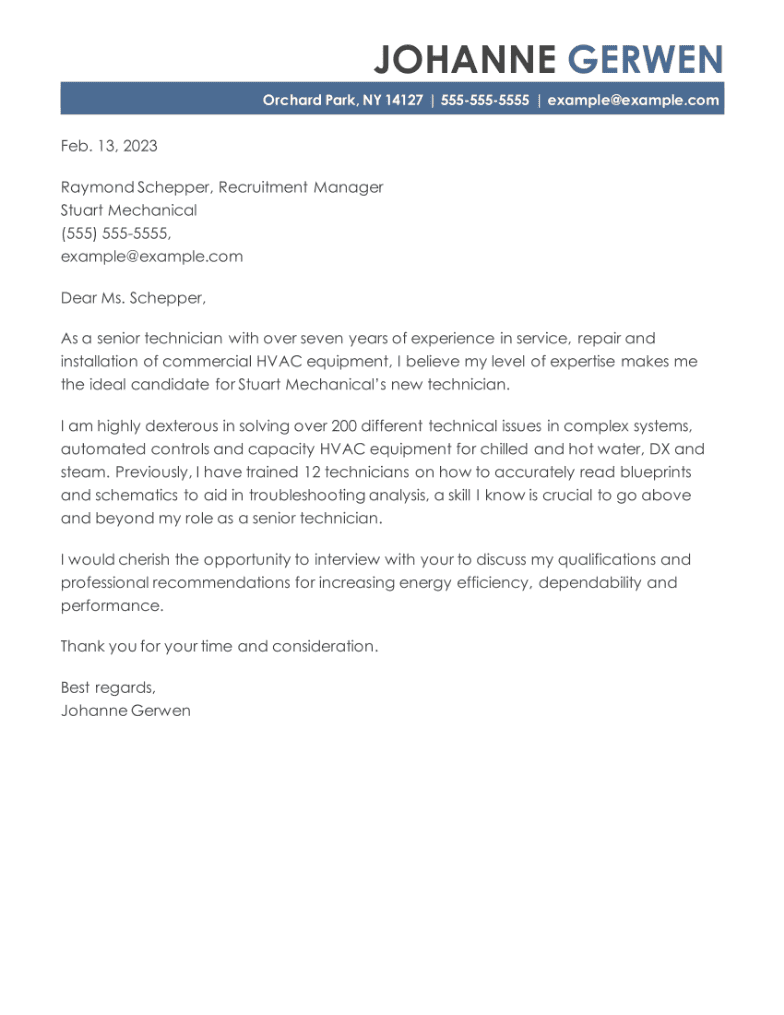
Cover letter writing can be tough. After all, no one likes putting a ton of effort into crafting a great letter, only for it to be tossed out or overlooked. Job seekers might wonder why a cover letter is even necessary in the first place.
The cover letter is many hiring managers’ first impression of a potential candidate. It acts as a brief glimpse into who you are and your relevant skills for the position. Many job seekers tend to think that the more detailed a cover letter is, the better it will be. However, long cover letters are not feasible for every job application you come across.
Of course, writing a short cover letter also seems counterintuitive. You want to express your interest in the position to the recruiter, talk about what you can bring to the table, and make an impression all in one place. How else are you supposed to accomplish that without writing a longer cover letter?
Here’s how you can write a short, succinct cover letter that still gets all your major points across.
Hiring managers look through a large number of job applications a day. A short cover letter might be the breather that an exhausted recruiter needs, thus making you stand out among candidates writing lengthier cover letters.
Here are a few reasons why you might want to craft a shorter cover letter for a job application:
If your job search is time-consuming, a shorter cover letter can be an efficient workaround that you need to remain concise and professional, and assemble many letters within a limited time.
Keep in mind that a good cover letter doesn’t necessarily need to be long-winded to get your point across. A short cover letter that includes the most important aspects of the job description can be just as effective.
Here are the basic rules for writing a short cover letter:
There are 5 key elements to formatting a professional cover letter:
Header
The header acts as an introduction to who you are and provides the hiring manager with ways to reach out to you if they are interested. It should include all your contact information such as:
Research the company you are applying for, and include this information up top:
A few other candidates will not take the time to look into this information and instead address the hiring manager with “To Whom It May Concern” or “Dear Sir”. This salutation is impersonal and leads many hiring managers to immediately toss the letter out. Always take the opportunity to research a contact person for every company you apply for, even for shorter cover letters.
Eye-catching opening paragraph
The opening paragraph should grab the reader’s attention. In a short cover letter, it is best to discuss why you are the perfect fit for this position right away. Your potential employer will appreciate the direct nature of your letter and get a better feel for your specific skills from the start.
This opening paragraph should also include a brief overview of your work history and why you are the ideal candidate. Keep in mind that you need to elaborate on your skills later on in the letter, so don’t go into too much detail up top. The goal here is to grab the reader’s attention.
Impressive Achievements (Related to the Job Description)
It can be easy to go on and on about your accomplishments in order to look good to an employer. For a short cover letter, however, explaining what specifically you accomplished in your previous positions can be enough. Keeping these explanations concise can be a true testament to your communication skills, which will be valuable in any industry.
Including any certifications you have and talking about your experiences or major achievements at a previous (or current) position is a good start, too. Candidates who are certified to perform a specific job will be more impressive to a prospective employer than someone who doesn’t have those qualifications. Additionally, mentioning how many years of experience you’ve had in a major company or two can speak to your dedication. Recruiters will be more confident in hiring candidates who demonstrate that they can stick it out at a position for a long time.
Why you are perfect for the role
This is yet another section that many other candidates tend to get carried away with. Explaining why you are the perfect fit for a role can be kept succinct. The trick is knowing how.
In order to get more information across in a shorter format, opt for bullet points. This doesn’t mean that you should reiterate your CV to the recruiter. Rather, list concise reasons why your current work experience fills the job opening you are applying for.
You might also want to look more into the company’s values, mission statement, and overall culture in forming this section. Writing a sentence or two about why you believe you would mesh well with this company based on these factors can easily set you apart from the competition.
Call to Action
The closing paragraph of your cover letter should reemphasise your top qualifications and your enthusiasm for the position. This then acts as an apt summary of the cover letter overall and allows your particular skills to be further embedded into the recruiter’s mind.
Finally, end the cover letter with a call to action: typically, requesting the hiring manager to contact you for an interview. You will also want to thank the hiring manager for their time and sign off in a professional manner (e.g., “Sincerely Yours”)…
Cover letter format
When it comes to the formatting itself, be mindful of the fonts and other designs you use. Use professional fonts and minimal formatting that does not detract from the content of the letter. Avoid brightly-colored designs at all costs. While you do want your cover letter to stand out, you don’t want it to look childish, either.
You will want to format the cover letter as though it is an email rather than a PDF file. This means that the file type itself does not matter as much as the contents. Many job postings will ask for you to copy and paste your cover letter into a submission form or email, anyway.
While it’s generally acknowledged that there’s a maximum length for cover letters (one page), there really isn’t any minimum length to adhere to. As long as you cover your key skills and experiences, including and especially why you think you are the perfect fit for a specific role, a cover letter can be surprisingly short. If you are able to condense all the relevant details of your work history down to a few snappy sentences, then all the more power to you. Being concise is key.
You should always take care to write a cover letter that is tailored specifically to the position you are applying for. This requires a level of finesse and attention to detail that can take time. However, that doesn’t mean you can’t write a great cover letter in less than five minutes. It’s best to start with a “general cover letter” that features all your top qualifications and experiences, and then adjust the letter to the needs of each specific job.
Remember to proofread after you’re done! No prospective employer will appreciate a cover letter that’s overrun with typos.
If you are truly pressed for time and aren’t sure how to cut your current letter’s length down to size, then CVHelp’s cover letter builder is just the tool you need. With hundreds of cover letter templates, cover letter samples, and tons of cover letter tips to use, you can craft a short cover letter in a matter of minutes.
Yes. You don’t necessarily need a lot of experience to get a short job. Where this sample cover letter includes information about past work experience, simply replace it with internships and academic experiences that feature relevant skills, or discuss more skills you have that show why you’re the best choice for an administrative short position.
We personalize your experience.
We use cookies in our website to ensure we give you the best experience, get to know our users and deliver better marketing. For this purpose, we may share the information collected with third parties. By clicking “Allow cookies” you give us your consent to use all cookies. If you prefer to manage your cookies click on the “Manage cookies” link below.